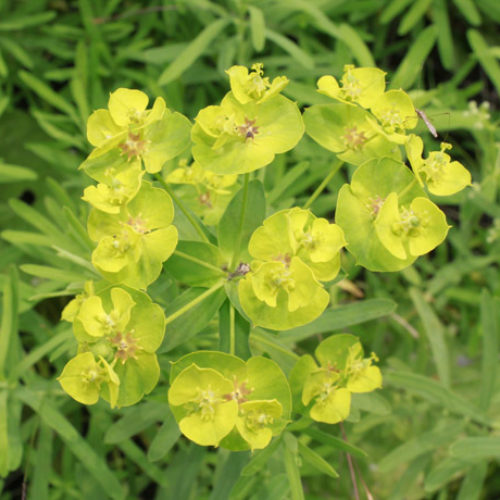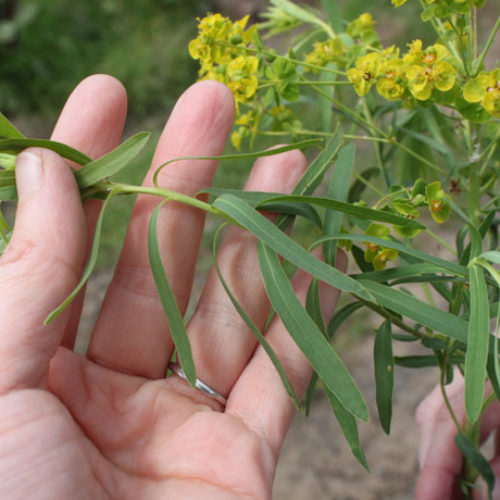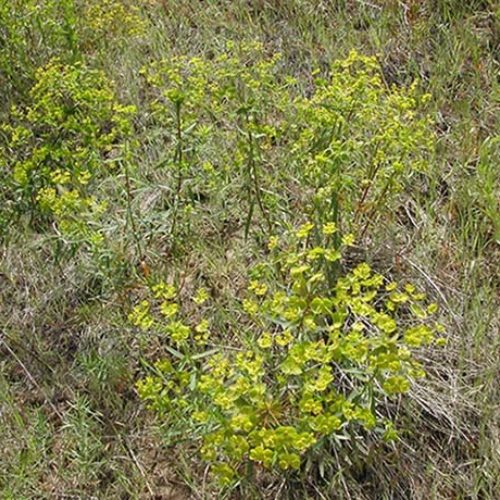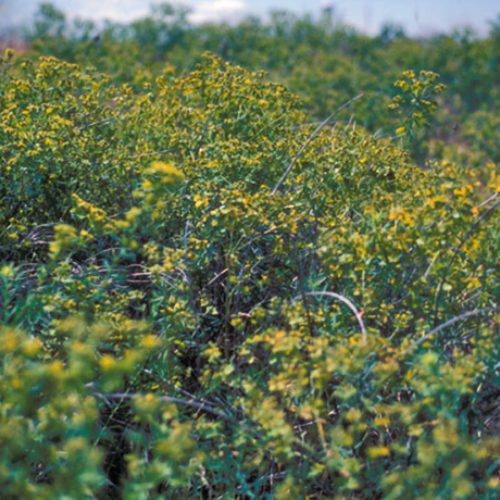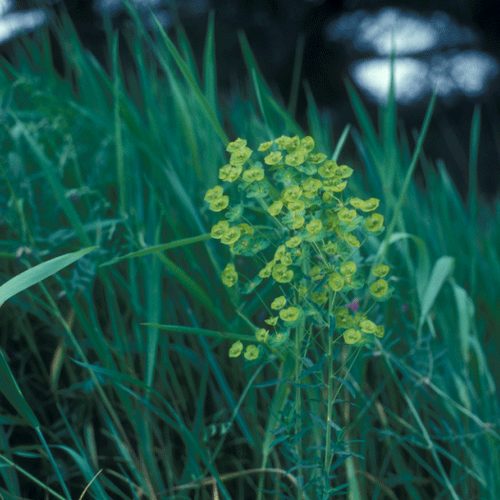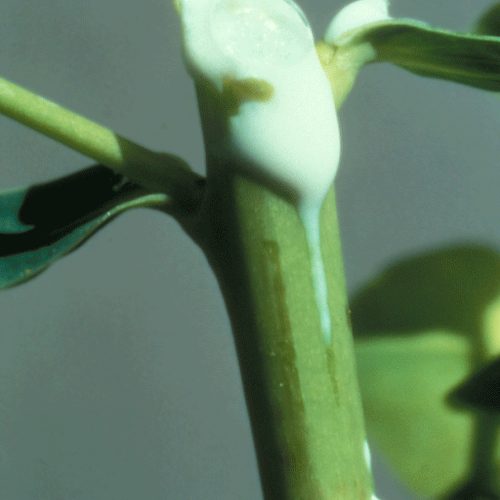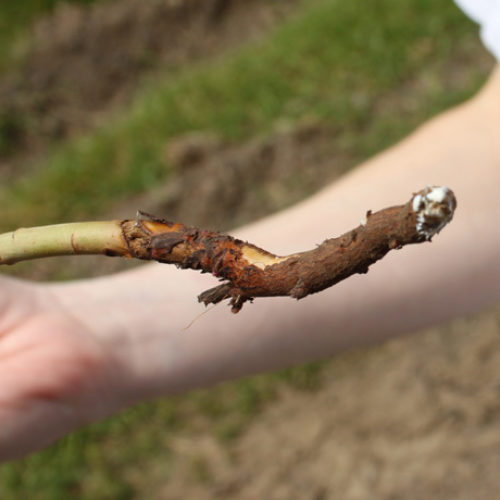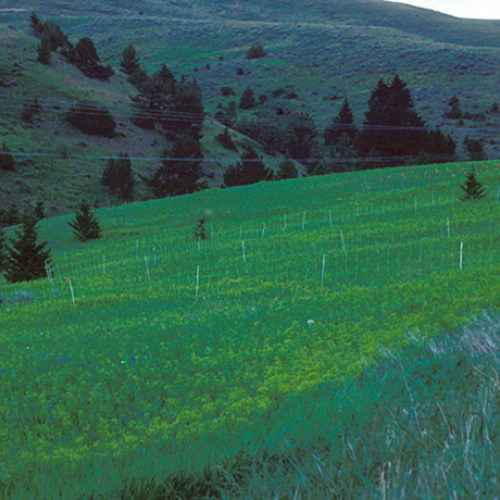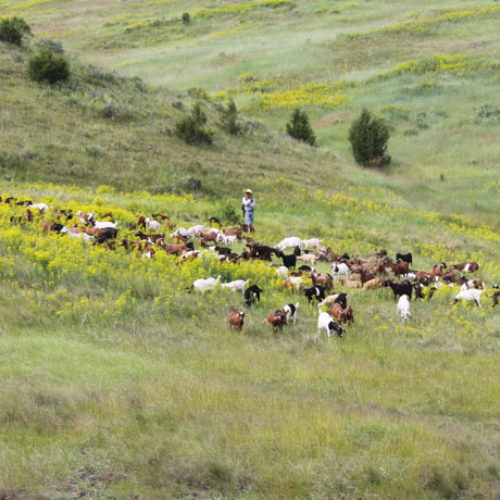Leafy Spurge
Euphorbia virgata
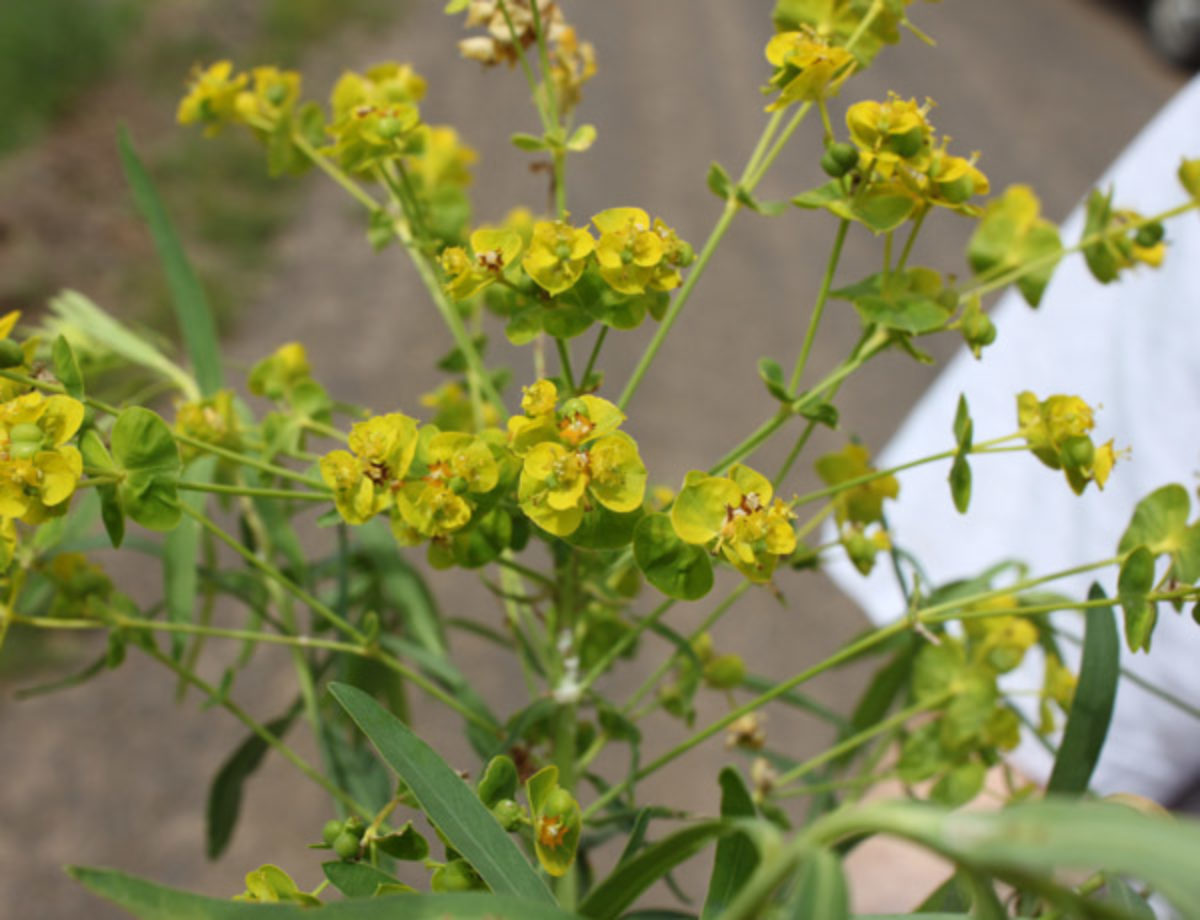
Family: Euphorbiaceae
Other Scientific Names:
Euphorbia esula (misapplied)
Weed class: B
Year Listed: 1988
Native to: Asia and Europe
Is this Weed Toxic?:
cattle, horses, and humans
Legal listings:
This plant is also on the Washington State quarantine list. It is prohibited to transport, buy, sell, offer for sale, or distribute plants or plant parts of quarantined species into or within the state of Washington or to sell, offer for sale, or distribute seed packets of seed, flower seed blends, or wildflower mixes of quarantined species into or within the state of Washington. Please see WAC 16-752 for more information on the quarantine list. For questions about the quarantine list, contact the Washington State Department of Agriculture's Plant Services Program at (360) 902-1874 or email PlantServices@agr.wa.gov.
Why Is It a Noxious Weed?
It is toxic to some animals and reduces the livestock carrying capacity of pasture and rangeland by 20 to 50%, causing an estimated $35-45 million loss per year in US beef and hay production in addition to the millions of dollars spent for control.
How would I identify it?
General Description
It is a perennial, rhizomatous plant with stems which originate from a crown just below the soil surface. The plants begin growing in early spring before their competitors. Stems, roots and leaves exude a milky sap that can be an irritant to skin.
Flower Description
Clusters of small, greenish flowers at the tips of branches made up of many male flowers and one female flower. Yellow bracts occur at the base of flower cluster, may appear to be petals from a distance.
Leaf description
Leaves are alternate, narrow and about 3 inches long with lowest leaves much reduced. Leaves have smooth margins and may have a whitish coating. Leaves by flowers are broad, heart-shaped and yellow-green, turning red in the fall after the first frost.
Stem description
Upright stems are 1.5 to 3 feet tall, branching near the top.
Fruit Seed Description
Capsule with seeds inside fairly smooth and dividing into 3, 1-seeded pieces.
Where does it grow?
Leafy spurge can adapt to a wide range of habitats. It spreads rapidly in areas where cattle or other grass grazing animals remove competing plants. Habitats include cropland, pastures, rangeland, urban parks, roadsides and disturbed sites. Please click here to see a county level distribution map of leafy spurge in Washington.
How Does it Reproduce?
Leafy spurge reproduces by seed and vegetatively from its root crown and root buds.
How Do I Control It?
General Control Strategy
Intensive cultivation and planting of competitive crops are useful methods for the control of leafy spurge in cultivated fields. Heavy infestations on rangeland may need chemical control along with grazing sheep or goats to further diminish weed growth.
Mechanical Control
Gloves and protective clothing are needed when handling leafy spurge to avoid contact with milky sap. Hand pulling leafy spurge is difficult due to its extensive root system. Plants can be mowed to prevent seed production but the roots can still spread.
Cultural Control
Frequent tilling of leafy spurge can be effective at reducing invasions. Equipment should be cleaned of plant parts to prevent spread to other locations. Promoting healthy plant communities and reducing disturbance of soil of natural communities can help prevent invasions.
Biological Control
There are a number of biological control agents used to control leafy spurge. Leafy spurge flea beetles, Apthona spp., adults and larvae attack leaf spurge by feeding on leaves and flowers (adults) and on root hairs and young roots (larvae). The red-headed leafy spurge stem borer, Oberea erythrocephala, have larvae that feed within the stems and root crowns and the adults cause secondary damage by chewing around (girdling) stems and causing stem death. The leafy spruge tip gall midge, Spurgia esulae, have larvae that feed and form galls on young stem tips. The galling and feeding by the larvae suppress floweirng and seed production. For more information about these biological control agents of leafy spurge, please visit WSU Extension Integrated Weed Control Project. Goats have also been used for the selective grazing of leafy spurge.
Herbicide Control
Please refer to the PNW Weed Management Handbook, or contact your county noxious weed coordinator.
For More Information
See our Written Findings for more information about leafy spurge (Euphorbia virgata).
Spokane County NWCB Fact Sheet on leafy spurge
Stevens County NWCB Fact Sheet on leafy spurge
Lincoln County NWCB Fact Sheet on leafy spurge



